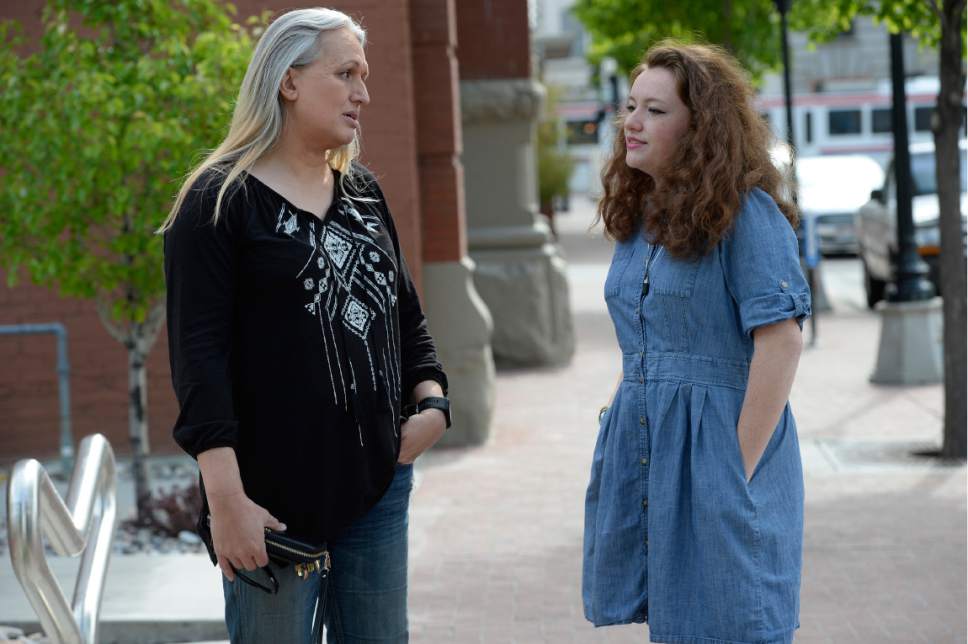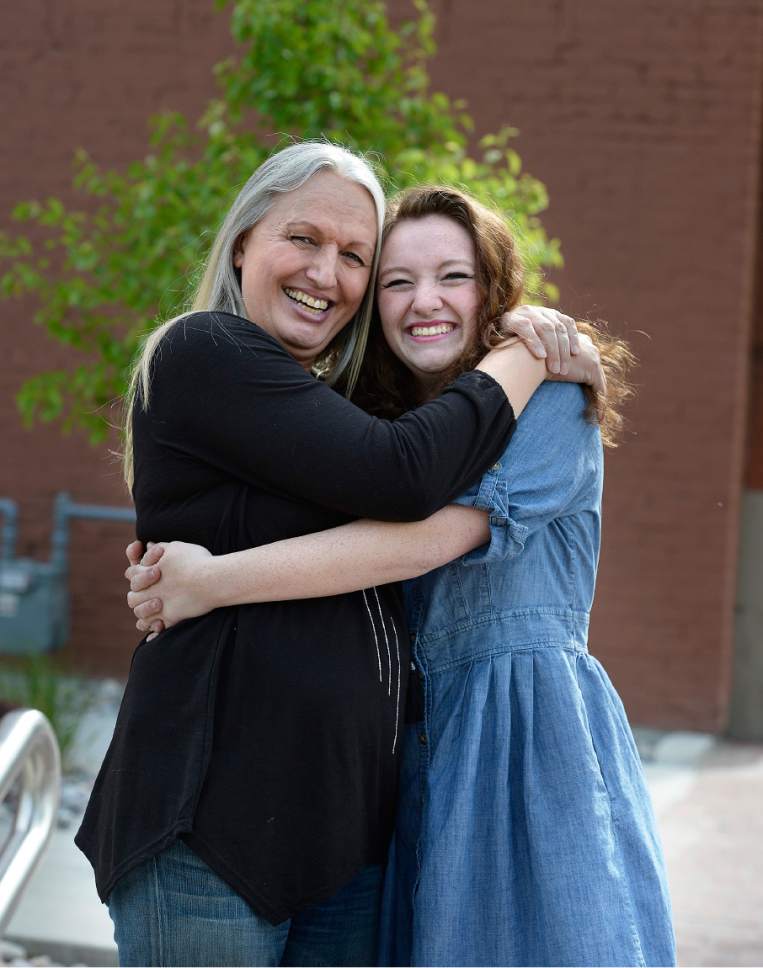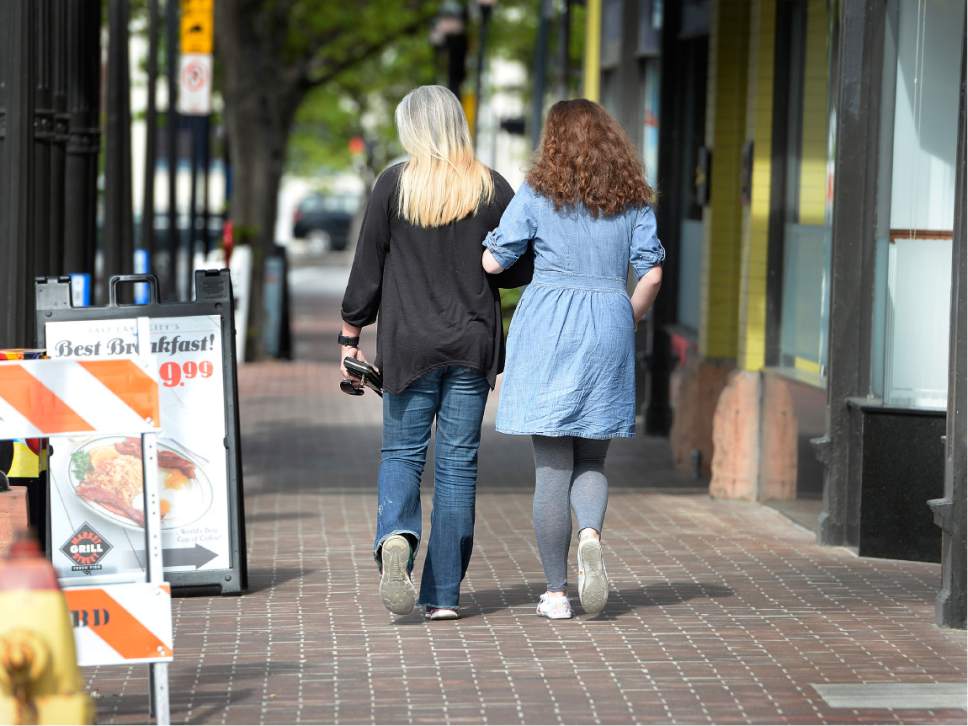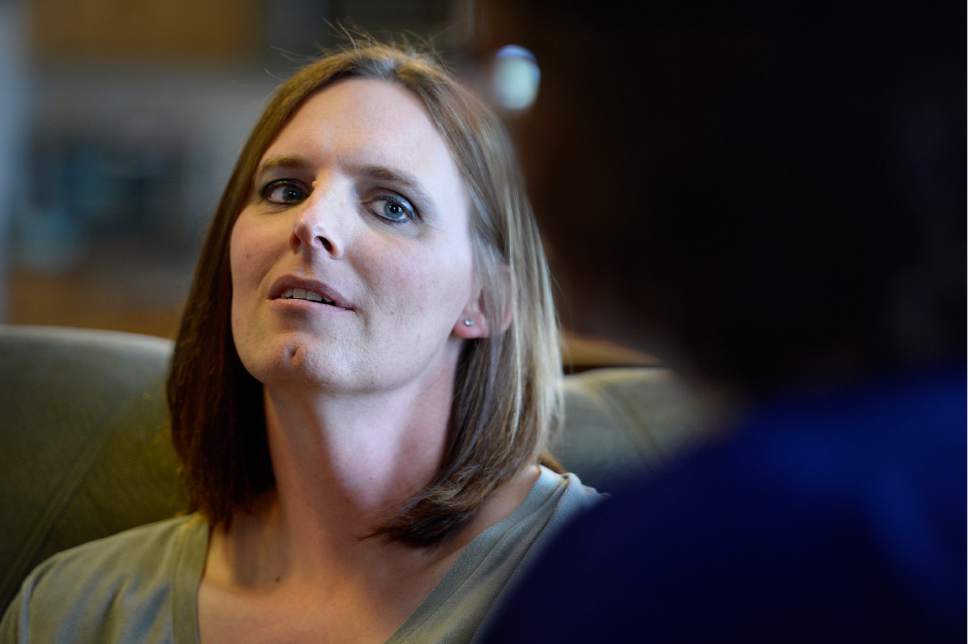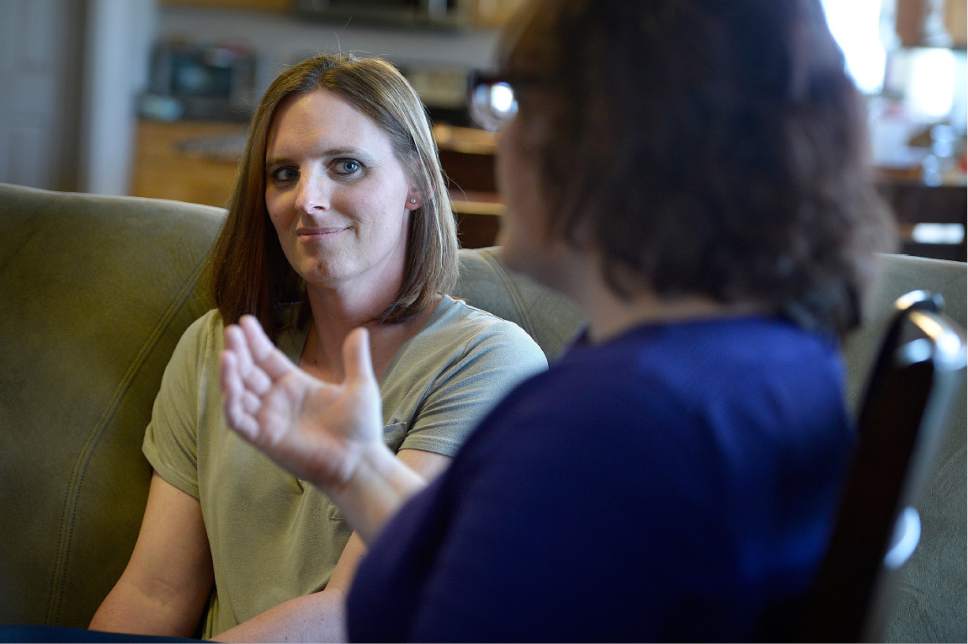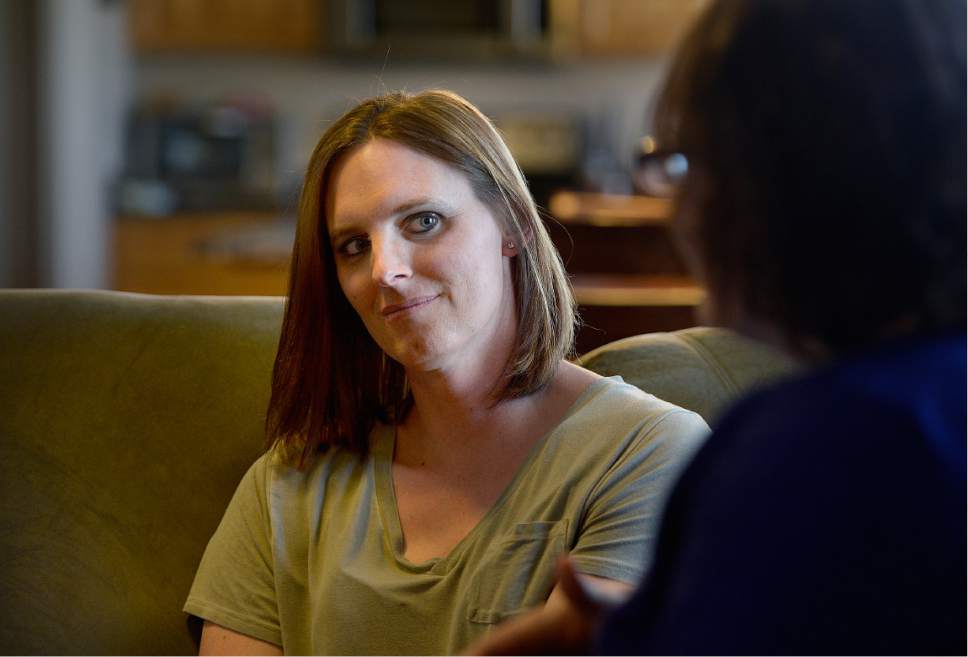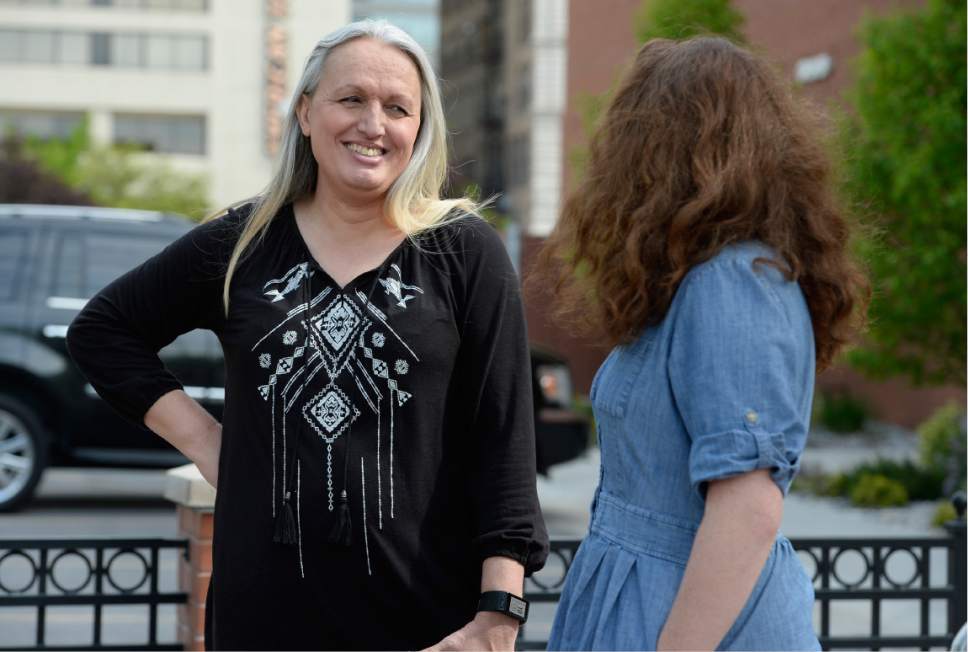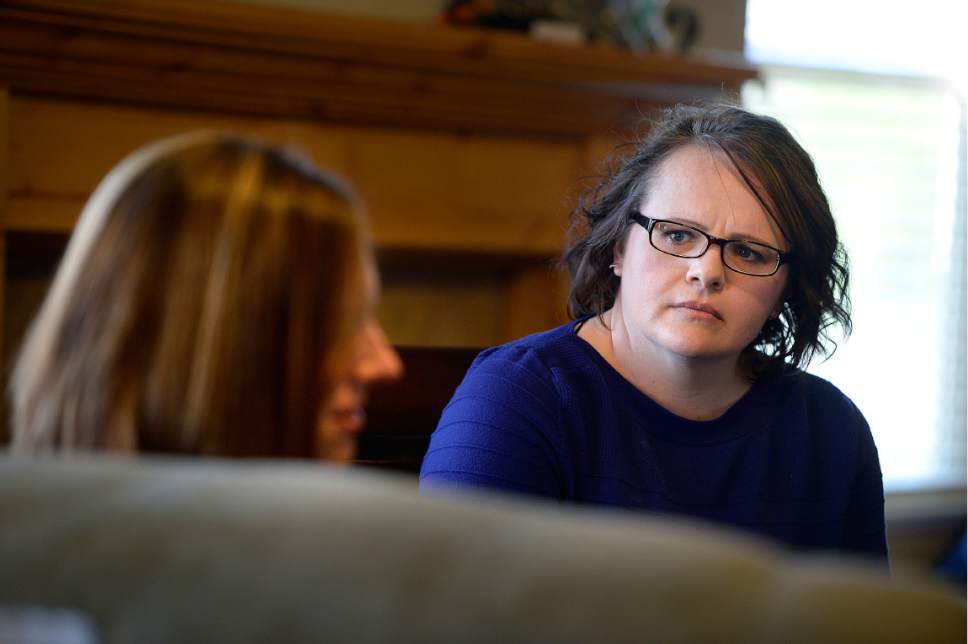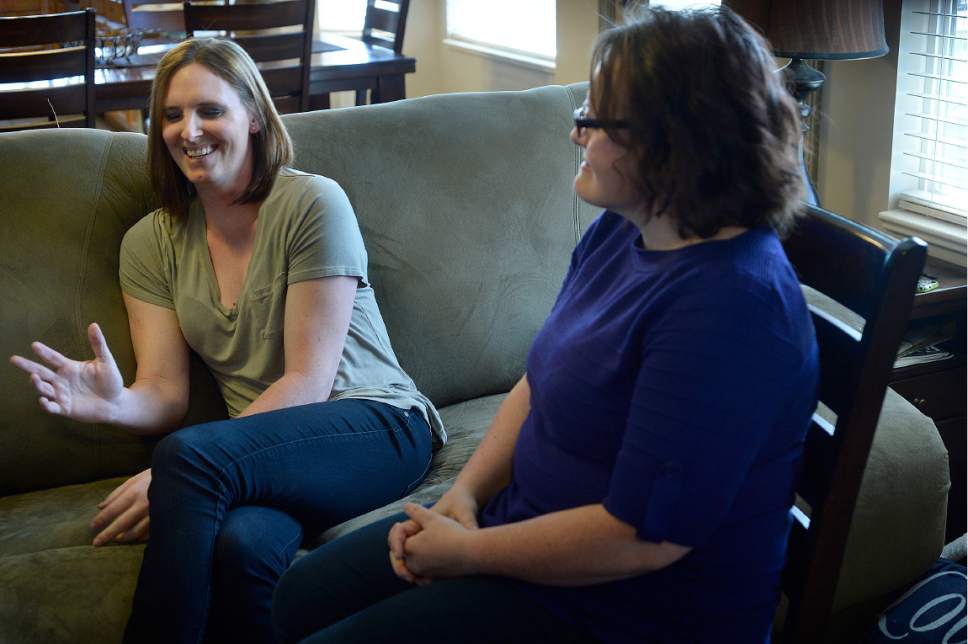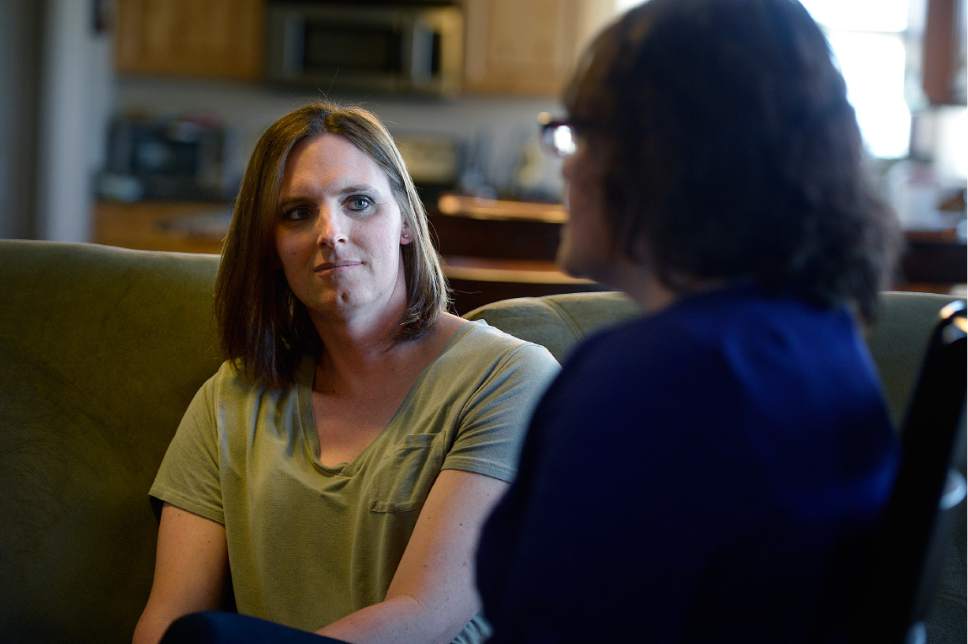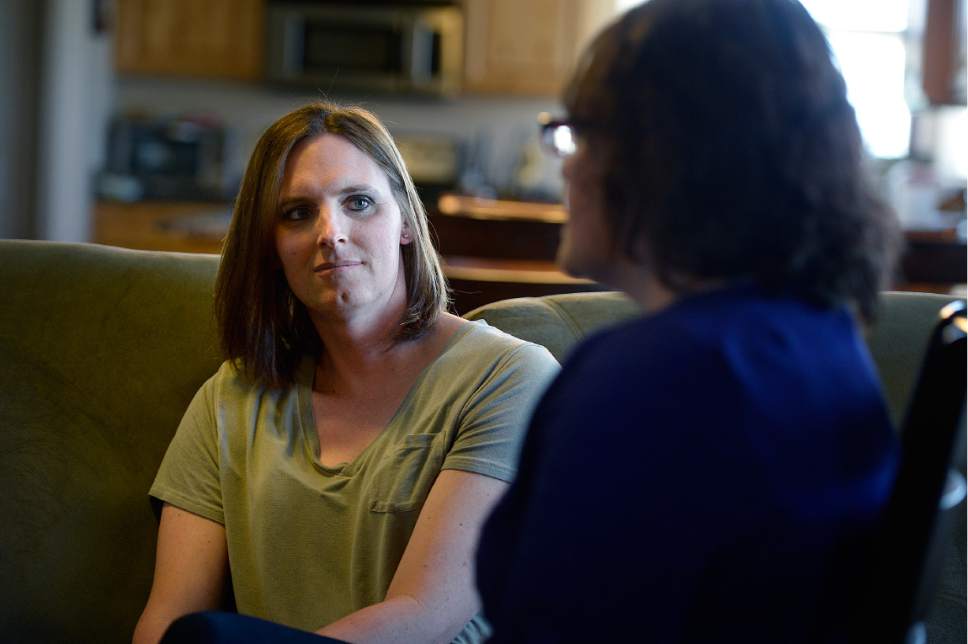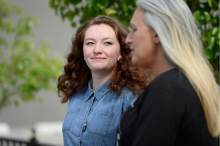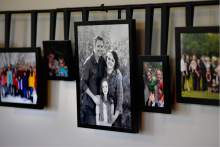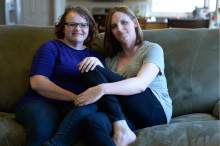This is an archived article that was published on sltrib.com in 2017, and information in the article may be outdated. It is provided only for personal research purposes and may not be reprinted.
Syracuse • Ann Pack so dreaded becoming a parent, she felt relieved when her spouse was infertile.
That's because Ann had a secret — one she feared would complicate and possibly destroy the world of any child.
The truth was Ann was born as Ryan.
It would take almost a decade after her marriage to Brigit before Ann let herself be even partially known to outsiders and even longer to tell the daughter they adopted.
On this Mother's Day, Ann Pack is among the many transgender women who had children when they were seen as men, who have arrived at a sense of peace with who they are and how their relationship with their children remains the same or is altered forever.
As she listens to talks Sunday in her Syracuse LDS congregation about the joys of motherhood, Ann will ponder her place in Mormonism's theological universe.
Sara Jade Woodhouse, a transgender Mormon woman in Ogden, will celebrate the day, too.
But each woman has had to navigate alone the transitions, family ripples and what to do about the opposite-gender spouse she married. How do you sustain relationships that were born of a past identity? It is never simple. There are no rules.
Exhibits A & B: Ann and Brigit remain married, and 12-year-old Alyssa still calls Ann "Dad." Sara is divorced and her high school daughter, Kira, is her best friend.
Rigid definitions • Mormonism — with its emphasis on the link between bodies and spirits — made it tougher to acknowledge what was happening inside of these women.
Since switching genders, they say they have found psychological and spiritual peace, even divine approval, along with a surprising welcome from their LDS leaders and congregations.
They are among a growing but little understood minority in The Church of Jesus Christ of Latter-day Saints.
Transgender Mormons in Utah have formed a support group. They march in pride parades. They talk openly about their experiences. A monthly "family home evening" group draws up to 30 participants along the Wasatch Front.
Still, the faith has policies in place and warns that elective sex-reassignment surgery "may be cause for formal church discipline," according to its guidelines for lay leaders.
An official and oft-quoted LDS document, "The Family: A Proclamation to the World," written and approved by top Mormon leaders, states that "gender is an essential characteristic of individual premortal, mortal, and eternal identity and purpose."
As the eldest son in a Kaysville family, Ann, who then went by Ryan, feared exhibiting female characteristics.
"Be a man," she was routinely admonished by her grandfather — even after she fell off a horse.
Her secret desires to be a woman brought her layer upon layer of toxic shame.
At 12, Ann began sneaking into her sister's and mother's closets, and wearing their clothes. When she was caught one day, her parents took her to their Mormon bishop and to a therapist. They all presumed this was an addiction — and treated it that way.
"I spent many hours on my knees praying for Heavenly Father to take this 'secret' away from me," Ann writes in an account of her experience published by North Star, a support group for LGBT Mormons. "It was obvious to me that other boys did not have these feelings."
Facing the feelings • This inner turmoil boiled over during a two-year LDS mission in London.
"Each day of my mission, I struggled with gender dysphoria and addictions. I became so tired," she writes. "I would lie in bed and ask myself, 'Why am I here?' "
One night, while her companion slept, Ann sneaked out of bed and went out on the town sans suit and tie — dressed instead as a woman.
"I passed a large full-length mirror. I stopped in front of this mirror and looked at myself. Self-hatred filled me as I looked at the person in the reflection of the mirror," she writes. "I was overcome with intense disgust like nothing I had ever felt before. I knew I deserved God's wrath and that there was a special place in hell for me."
The young missionary returned to find the companion awake and insisting that Elder Pack call the mission president.
It was 2 a.m.
Later that morning, she says, she told the LDS leaders everything — her dressing, her gender dysphoria. Instead of punishing the agonized proselytizer, they sent her home on a medical release.
She returned to begging God to be "healed," but nothing worked.
Then, as Ryan, she met Brigit.
Telling the truth • Brigit Pack was not too worried about her then-fiance's sexuality. She wondered whether her future husband might be gay, but she was assured by bishops and other leaders that "things would work out."
Filled with optimism, the couple married "for eternity" in the Bountiful LDS Temple.
Ann had taken up a "manly" profession of construction and truck driving, while Brigit worked in the hotel industry.
Not long into the marriage, Brigit's appendix erupted, making it almost impossible to conceive a child. She tried various medical interventions to no avail, just as her husband's anxiety and private worries escalated.
In 2004, they adopted baby Alyssa, and Brigit especially felt a sense of fulfillment.
"It was my passion to earn the title 'mother,' " she recalls. "When I did, it was powerful."
But Ann could hide her true self no longer. The couple discussed, prayed, wept and held each other. What should they do? There was no map for the way forward.
Brigit loved her spouse with all her heart and was committed to staying together forever. About seven years ago, she signed off on Ann beginning to present as a woman, to wear women's clothes, grow her hair and slowly take female hormones.
Finally, about two years ago, they told Alyssa.
They had been introducing their daughter to several trans friends, which they hoped would help the girl see that her father becoming a woman would not be bad.
The youngster's first concern was whether her parents were going to split up. When that fear eased, Alyssa seemed all right with it.
"I'll still be your dad," the now long-haired, striking woman assured her daughter.
And Brigit is adamant: Their daughter does not have two mommies — she is the mom.
Love's fluidity • To Kira Woodhouse, Mother's Day has always been about her mom, not the woman named Sara Jade — the woman she knows as her dad, even though she can't remember her father's male face.
From earliest childhood, the 17-year-old has known "him" as "her," as "Sara."
Pronouns don't bother the lively teen. "Sometimes, when I am talking about Dad but using female pronouns," she says with a smile, "it confuses people."
Kira is amused rather than annoyed when the pair dines out and a waiter asks what her "mom" wants to order.
Last year, on Father's Day, Kira posted on Facebook a close-up of the look-alike duo paired with the caption, "Happy Father's Day. To the bravest dad I know."
"The roles of mom and dad don't have to have a gender," Kira says matter-of-factly. "My mom will make dinner and help me clean my room, and my dad is going to beat up my boyfriend."
Those roles have never changed.
"I will always be her dad," Sara says. "I don't want to be anything but her dad."
The future father believed she was in the wrong body long ago. It started, she says, when children began to divide by gender.
"I knew I didn't belong in the group I was expected to join," she recalls. "I felt way more comfortable among the girls."
But this was Salem, and being different in a small, conservative, mostly Mormon, Utah County town, Sara says, "was not a good thing."
Her interest in theater prepared Sara to play the male, wearing a physical and emotional disguise as she fought her female feelings all through puberty, college and into marriage.
Eventually, though, she saw only one viable option: Transition to her real self or die.
Sara told her then-wife, "This is my problem, and I am going to fix it."
Next, she told her Mormon bishop, who was sympathetic but asked, "Why can't you be the best woman in a man's body you can be?"
She took her problem to a therapist at LDS Family Services, looking for a "cure" or a "solution."
The therapist told her: "You are not sick. I can't cure you. This is who you are. You are going to have to figure out what to do about it."
When Sara told then-5-year-old Kira that Daddy was going to become a woman, the girl responded, "That's weird," and then followed up with, "we can play with dolls when I come to visit you."
It was the precocious child who picked a middle name, Jade, for Sara, after a young friend Kira thought was beautiful.
Her daughter's unqualified love and exuberant acceptance have been transformative, Sara says. "She's been my biggest supporter."
After the divorce, the couple remained friends, hanging out, watching movies and chatting on the phone. They settled into a caring, platonic relationship.
And Kira, who lives with her mom, felt loved by both.
After about seven years or so came the news that Sara's ex-wife was engaged. It sent Sara into a panic and deep depression. She was happy with her female appearance and personality but still had profound affection for her former mate.
Sara offered to cut her hair, wear men's clothes and don her former facade if her ex would call off the wedding. She quit eating, stopped taking female hormones and experienced dark moods and thoughts. She threw out all her feminine clothes and went to Deseret Industries to buy a suit, shirts and ties.
When Sara came out of the dressing room as a man, Kira started to weep.
"This was suddenly a man I had never met," the teenager explains. "The hardest part was seeing her become a scary, depressed, wanting-to-die man."
After a few months, Sara returned to being female to "save my sanity," she says, "and be there for Kira."
At church • In the past, Sara says, many transgender members either left their faith or hid.
"You can be gay or lesbian and no one will know that unless you tell them," she says, "but for [a transgender person], gender identity is so much a part of who you are that you need to portray externally so you feel comfortable when you look in the mirror."
In November 2015, the LDS Church proclaimed its policy declaring gay couples to be apostates, forbidding them from blessing or baptizing their children until they turn 18 and rocking the entire LGBT community and their allies.
"That was hard," Sara says. "Kira was crying. I was crying."
Sara is resigned to it but believes the LDS policy "is not doctrine and it's not inspired," while Kira still hasn't reconciled it with her faith.
Both remain Mormon believers, committed to the idea that their church "evolves" as it responds to "divine revelation."
A little more than a year ago, Sara moved to Ogden to teach drama at Highland Junior High School. She had felt accepted in her Millcreek Mormon ward and hoped for the same understanding in her new home.
Sara told her bishop there that she would attend as long as she was accepted as a woman.
"Refer to me as 'Sister Sara,' read my name as Sara, not the name on the LDS records," she pleaded. "Let me attend [the all-female] Relief Society."
He said he would think about it.
She continued to go to services for a few weeks and the bishop approached her to say, "I see you are still attending. Does that mean we passed?"
She laughed and has been a part of that LDS ward ever since.
The trans woman will be in the pews on Mother's Day, she says, when she will get a rose, a chocolate or whatever goodie is distributed to every woman in the congregation.
Next month, on Father's Day, Sara will privately relish her own secret — she will always be Kira's dad.
pstack@sltrib.com Twitter: @religiongal


